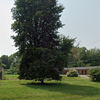Hilltowns all lose population in last decade while suburbs and city grow
ALBANY COUNTY — With a 5.18-percent increase in population since the last time residents were counted, a decade ago, no other municipality in Albany County saw a bigger jump in its population rate than New Scotland in the census count released this week.
Following a national trend, each of the four rural Helderberg Hilltowns lost population since the last census, in 2010. Westerlo had the biggest decrease at close to 5 percent.
Also matching national trends, Guilderland has diversified: Census data show 77 percent of residents are white, down from 86 percent in 2010. The town has seen its population increase by 4.38 percent in that time, from 35,303 to 36,848.
Overall, Albany County saw a 3.5-percent increase in population since 2010.
This story is based on available data for 10 cities and towns in the county.
Census data show Altamont and Voorheesville as their own individual tracts. Census Tract 146.12 (Altamont) shows a population decrease from 1,720 in 2010 to 1,675 in 2020 while Tract 145.03 (Voorheesville) saw an increase from 2,789 to 2,841 over the same period.
The census, performed every 10 years, is important for two main governmental reasons: Its data will be used to redraw political maps for both state and federal offices — New York is set to lose one seat in the House of Representatives — and it directs federal funds based on population.
Two towns, so similar but so far apart
New Scotland’s 5.18-percent population growth over the past decade in comparison to the other municipalities in Albany County is remarkable, but compared to itself, the town’s population has increased just 7.25 percent in 50 years.
New Scotland and Guilderland share a nearly 9-mile municipal border and are both close to 58 square miles in area. Unlike the more distant and rural Hilltowns, both Guilderland and New Scotland offer residents an easy commute to the city of Albany.
But, when it comes to population, the past 50 years has been a story of contrasts.
Guilderland has seen its population increase by nearly 75 percent since the 1970 Census, from 21,208 to 36,848, while New Scotland’s population went from 8,481 to 9,096.
It’s not as if New Scotland isn’t a desirable place for developers. Rather, the town is hampered by the constraints of infrastructure: New Scotland lacks enough access to water and sewer to support multiple developments on a Guilderland-sized scale. New Scotland has nine non-contiguous water districts serving just 850 users. There are approximately 4,500 properties on the town’s tax rolls; not all have houses — still, that’s a lot of wells.
Speaking to The Enterprise in 2019, comparing another Albany County municipality, Bethlehem, which is adjacent to both New Scotland and to the city of Albany, New Scotland Councilman Adam Greenberg, said “We don’t have public water or public sewer in most areas, so without that development pressure at the moment, we’re not in the same position Bethlehem is in.”
To a large extent, New Scotland’s new development is due in part to a series of infrastructure work-arounds. The public water for Country Club Estates, for example, is supplied by the village of Voorheesville while each home in the development has its own septic system.
In Kensington Woods, both its water and sewer systems are private — and very expensive. Its community water-supply system is fed by a high-capacity supply well that fills a storage tank, which uses pumps to distribute the water through a series of underground service pipes. The town will eventually be taking ownership of the sewer system at the development off of Hilton Road.
Besides infrastructure, or lack of it, planning has also shaped both towns.
Some 15 years ago, commercial development of the former Bender melon farm began in earnest. Fourteen years following Sphere Development’s scouting expedition for a big-box mall, the property at the corner of routes 85 and 85A was sold to the Mohawk Hudson Land Conservancy for $1 million — about 90 percent of the land will be preserved.
The conservancy will have to sell 20 of the farm’s 198 acres along Route 85, across the road from Stewart’s, to a potential commercial interest to help cover the purchase price.
The big-box store moratoriums and other actions at the former farm spurred New Scotland to eventual action, first with a hamlet-zoning plan in the area around Bender farm and then with the adoption of a town-wide comprehensive plan, both in 2018.
The recommendations in the plans will be incorporated into New Scotland’s zoning code.
In Guilderland, the die was cast long ago.
“I think, I’m not positive, if you actually look at the town’s growth, I think most of it occurred in the ’70s and ’80s,” Supervisor Peter Barber told The Enterprise, while over the past 20 years, the town’s growth has tapered off compared to those previous decades.
Guilderland developed its first comprehensive land-use plan about 20 years ago.
In 1970, Guilderland’s population was 21,208; in 1980, it was 26,515; in 1990, the town’s residents numbered 30,011; and in 2000, Guilderland had a population of 32,688.
Speaking anecdotally, Barber said that, in the 1970s and ’80s, a lot of single-family subdivisions went in around town, in large part because of the water and sewer infrastructure.
He also pointed to the quality of Guilderland schools, which are “always rated very high,” and he added that families were also larger at that time as well.
“I really can’t point to one particular factor; it’s probably just a combination of factors that made the quality of life very attractable,” he said.
Asked about in his own time, chairing the zoning board and as supervisor, what he had seen the town do to help spur growth, Barber noted the zoning board had “no role whatsoever” over residential subdivisions; that was the planning board’s purview.
Asked what he observed in his time, Barber said that, in the early 2000s, growth had slowed, but the town continued to build its commercial base. Many of the new restaurants and small businesses that came to town in the 21st Century had owners who ended up as residents of Guilderland, said Barber, who has played a successful role in the town’s recent growth attempts.
In July, an appeals court unanimously overturned a lower court’s ruling that halted construction of Pyramid’s 222-unit apartment development on Rapp Road and shot down plans for a future Costco Wholesale store on Western Avenue.
Barber, citing town planning documents, argued on behalf of the town before the appeals court.



